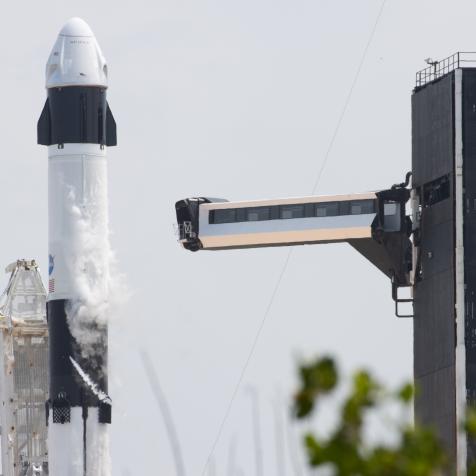
Loren Elliott/Getty Images
Fly Me to the Moon and Mars: SpaceX’s Starship and Spaceports
Elon Musk’s SpaceX is developing a reusable transportation system for spaceflight to the Moon, Mars, and beyond our wildest space dreams.
Elon Musk founded SpaceX in 2002 with the goal to colonize Mars and make human life multiplanetary. Through trial and error, the company developed and successfully launched the Falcon 9 rocket, Falcon Heavy rocket, and Dragon spacecraft. These reusable systems are responsible for launching satellites into space as well as sending cargo resupply missions to the ISS. For the first time in history on May 30, 2020, NASA astronauts launched from NASA’s Kennedy Space Center in Florida to the International Space Station inside of a SpaceX Crew Dragon atop a Falcon 9 rocket.

NASA/Joel Kowsky
A SpaceX Falcon 9 rocket carrying the company's Crew Dragon spacecraft is launched from Launch Complex 39A on NASA’s SpaceX Demo-2 mission to the International Space Station with NASA astronauts Robert Behnken and Douglas Hurley onboard, Saturday, May 30, 2020, at NASA’s Kennedy Space Center in Florida.
SpaceX is working on many prototypes for its next generation of spacecraft called Starship. Starship, accompanied with a Super Heavy rocket, is a type of reusable transportation that is designed to carry passengers and cargo to the Moon and Mars. This commercial vehicle is key to establishing a human city on Mars.
When paired with the Super Heavy booster, Starship stands at about 400 feet tall. Each prototype goes through rounds of tests. Some of the tests are called hops. Most recently, a Starship vehicle prototype, SN5, completed a hop in which it launched nearly 500 feet in the air and then landed. It was a short flight but confirmed SpaceX is a step closer in creating a fully functional space vehicle for the beyond. These test launches occur at SpaceX’s site in Boca Chica, Texas. This private launch site consists of a rocket production facility, test site, and spaceport. Some of the reasons SpaceX chose this location is because it’s close to the equator, not densely populated, and near the Gulf Coast. Boca Chica is a small coastal village.
Instead of solely using land-based launchpads for Starship, SpaceX is also building floating spaceports, more commonly referred to as ocean launch platforms.
Most recently, SpaceX has announced plans to build a luxury spaceport resort! Musk’s vision is to turn Boca Chica into a “21st century Spaceport.”
#dearMoon
Yusaku Maezawa, a known billionaire and art collector from Japan, will be SpaceX’s first private passenger on a lunar tourism mission to fly by the moon in 2023 aboard Starship. His trip is known as the #dearMoon project. It’s an art project with the goal of creating new art to inspire world peace. Yusaku will bring several artists with him. His ticket to the moon is partially funding the development of the spacecraft.
Starship Lunar Lander for NASA’s Artemis Program
SpaceX is building a modified and reusable version of Starship for NASA’s mission to land astronauts on the moon by 2024. This Starship, as a human landing system, is an important part of the Artemis program. It will have the ability in space to connect with NASA’s Orion’s spacecraft and the Lunar Gateway in order to transport astronauts to and from the lunar surface. Blue Origin and Dynetics are also developing human landing systems for the Moon.

NASA Goddard













































































